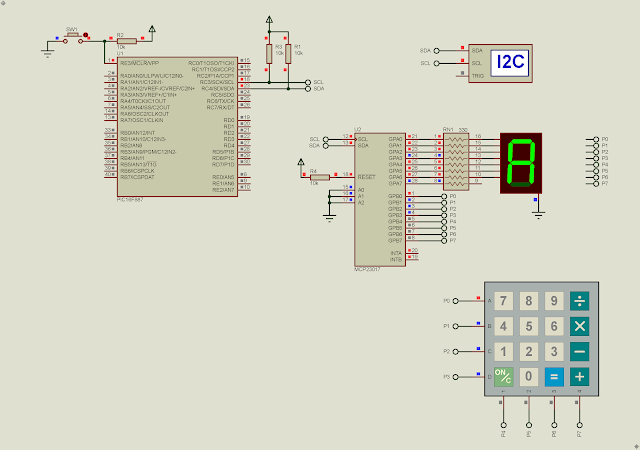In previous post, I introduce about using the MCP23017 16-bit I2C I/O expander with PIC16F887. This chip can be interfaced with various types of I/O device. In this example, I a PIC16F887 micro-controller command this I2C chip to scan and find key-press from a 4x4 matrix keypad. Key present will show on a single common cathode seven-segment display.
 |
| Simulating Program in Proteus |
The I2C operates at 400kHz serial clock frequency. Lower nibber of GPB is configured as digital output while the higher nibble is configured as digital input detecting key-press. GPA is configured as digital output, driving a 7-Segment display.
.jpg) |
| Two 4x4 matrix keypad for Arduino |
When key-press is found the micro-controller sends a seven-segment data to GPA of the MCP23017, and it will wait for 100 Milli seconds. A key value of 0xFF is ignored.
Click here to download this example. If you prefer another I2C device, you can choose the PCF8574AP that's described in this post.
No comments:
Post a Comment